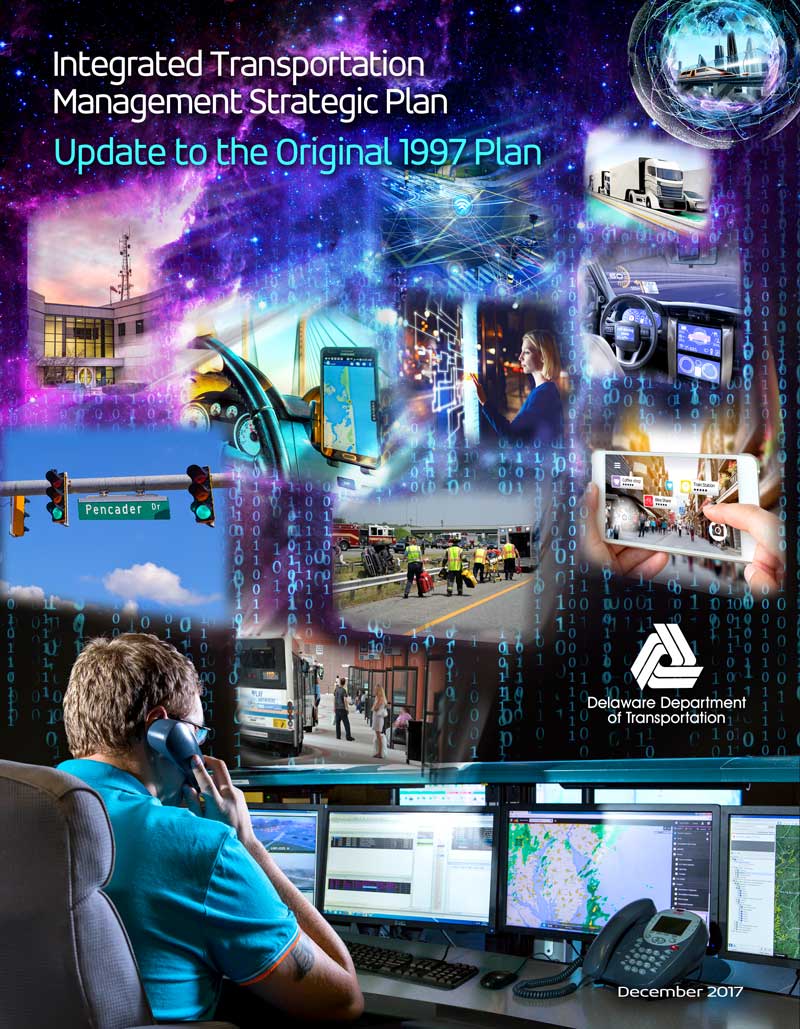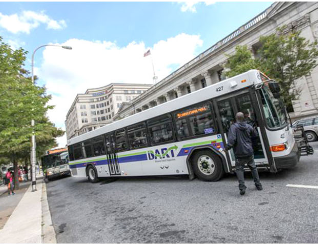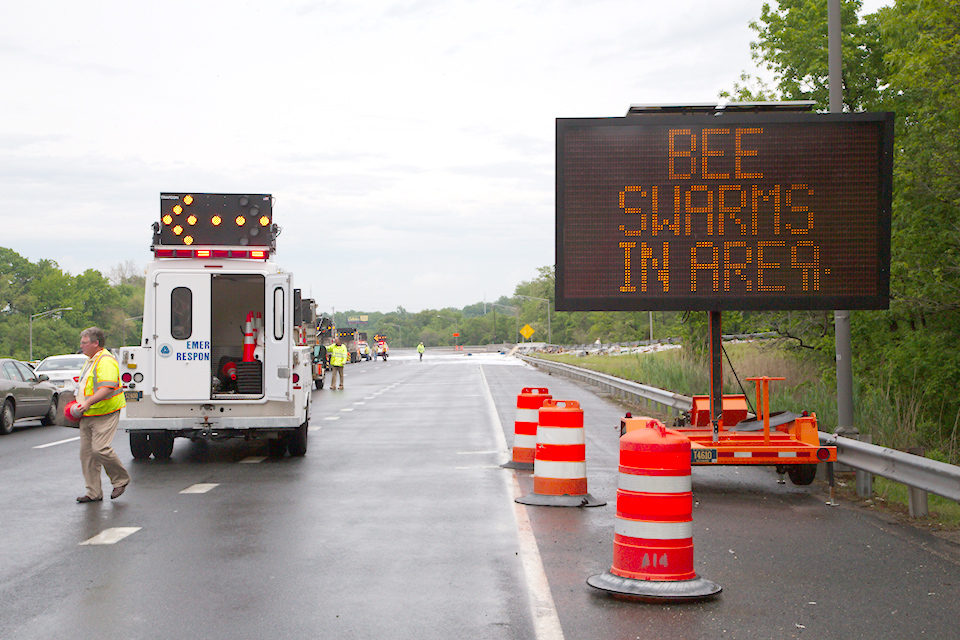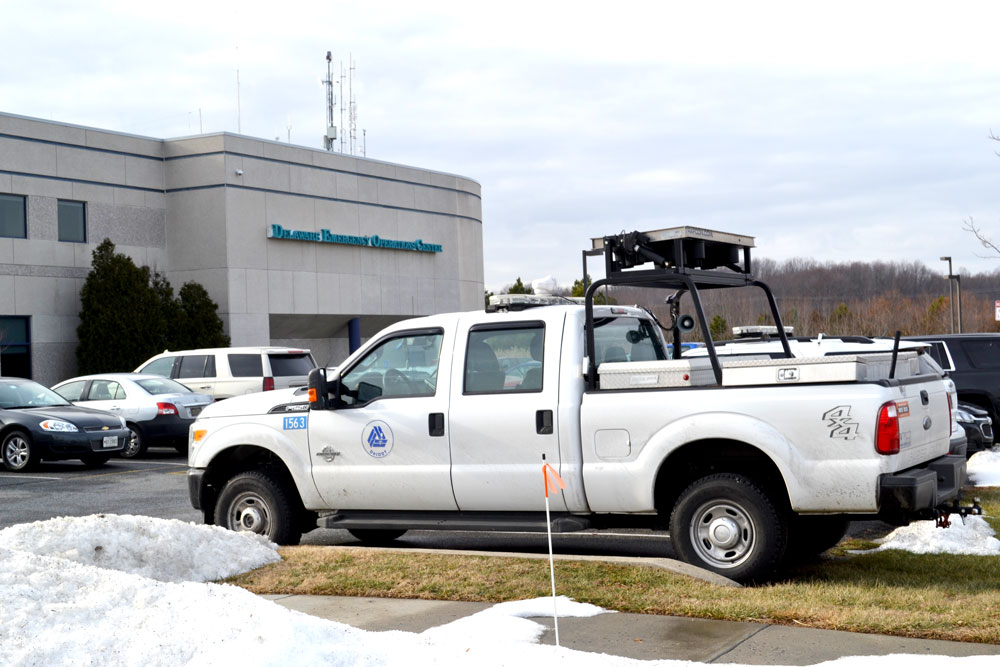
What is Transportation Management?
Transportation management is DelDOT’s way of doing business – integrating technology, infrastructure and people to achieve mobility, safety, and security goals. The integrated transportation management program is designed to support all modes throughout Delaware.
ITMS Strategic Plan
DelDOT’s Integrated Transportation Management Strategic Plan was originally written in 1997. Based on foresight at that time, significant network and infrastructure improvements have been systematically installed for over 20 years. This successful delivery has positioned DelDOT to bring the future to DelDOT now, due to Delaware’s sophisticated statewide system of monitoring, information, control and telecommunications capabilities.

The 2017 update to the strategic plan includes a plethora of information geared to a variety of readers. First of all, it provides a comprehensive summary of Delaware’s integrated transportation management program. Secondly, the plan provides status on individual elements within the program. Thirdly, the document provides individual quick-reference sheets on featured topics. Lastly, the Plan provides a call to action for investments and teamwork for Delaware to continue realizing the value of its integrated transportation management program – a value that grows exponentially as the system is further built and integrated.
Keep up to date on exciting progress by reviewing the TMC’s Innovative Projects and Latest Updates.
Multimodal
DelDOT’s integrated transportation management program is multimodal, serving different means of transport such as public transit, freight movement, aeronautics, bicycle transportation and pedestrian transportation. Managed centrally from DelDOT’s Transportation Management Center (TMC), DelDOT provides real-time, multimodal information:
- traffic information
- weather and flood monitoring and warning system
- real-time bus locations in collaboration with the Delaware Transit Corporation
- status of ferry operation
- status of railroad crossings
- freight monitoring and information systems

A vast amount of this data and information is accessible real-time through this website, the DelDOT App and the state’s 1380 AM and 98.5 FM radio station, WTMC!
Additionally, the integrated transportation management system’s ability to monitor conditions and remote-control elements such as signs, signals and gates provide options to innovatively manage the dynamic conditions of the multimodal transportation system. For example, by combining the ability to monitor the location of buses with the intelligence built into the traffic signal system software, buses can be provided priority treatment passing through traffic signals. Looking further to the future, autonomous (driverless) vehicles promise efficiency and safety benefits. Autonomous vehicles are still in the research stage through Delaware’s automated shuttle program. Read more about DelDOT’s vision for innovation and integrated transportation management in the Long Range Transportation Plan and the Integrated Transportation Management Strategic Plan.
Delaware’s Key ITMS Attributes
Making the most of the transportation system
Managing infrastructure to fully realize the greatest return on investment
Ease of implementation
Rapid deployment solutions producing immediate return on investment with limited system disruptions
Customer experience
Providing real-time traveler information, allowing for informed mode, route and travel choices
Safety
The ability to monitor, control and inform provides a critical foundation
Innovation
Organizational and technological solutions that go beyond traditional approaches
Flexibility
Easily adapted to technological and environmental changes
Affordable
Less than 4% of the state’s annual capital transportation budget (estimated)
Positions us for the future
Adaptable nature positions Delaware to readily facilitate connected and automated vehicles and integration with future information technologies
Key Elements of DelDOT’s ITMS Program
Collaborative Approach
A leader in the nation when it comes to transportation management, the Delaware Department of Transportation (DelDOT) embraces a collaborative approach. DelDOT's Transportation Management Center (TMC) is co-llocated with the Delaware Emergency Management Agency (DEMA) and Delaware State Police (DSP).
The diagrams below demonstrate how DelDOT’s TMC facilitates a collaborative approach with internal and external applications.

How is DelDOT Unique?
- Owns 90% + of roads
- Owns most traffic signals
- Operates the transit system
- Operates the tolls
- Truly multimodal
- Integration of planning and operations
Transit
Transit is an integral component of a well-balanced, multimodal transportation system. To manage both fixed route and paratransit service, the Delaware Transit Corporation (DTC) has implemented the Delaware Advanced Transportation Management System (DATMS). This system provides real-time vehicle locations and schedule adherence status of the transit fleet, along with status messages such as notifications of mechanical issues or breakdowns to help DTC better manage their fleet and improve operational efficiency. The DATMS is now fully installed in the DTC fleet and preparing for system acceptance. DTC deployed a microtransit pilot program in 2021 in the Georgetown area of Sussex County. Microtransit is a form of bus demand responsive transport vehicle for hire. This transit service offers a highly flexible routing and/or highly flexible scheduling of minibus vehicles shared with other passengers. Microtransit providers build routes ad-hoc exclusively so as to only match each demand and supply and extend the efficiency and accessibility of the transit service. This is a one-year FTA grant-funded pilot that has since been extended until Dec 2022 to provide more customer-centric Demand-Response microtransit transportation services. DTC is also planning to upgrade its paratransit scheduling and dispatching platform to better meet the mobility-on-demand capabilities of the future. The integration of these new transit services into the DATMS environment continues.

Fully integrating the DATMS with the Integrated Transportation Management System (ITMS) will enhance the transit operations and safety. The expanded system will be capable of providing real-time information to the ITMS in support of traveler information as well as on-board video in support of emergency event management. Fully integrating the DATMS and ITMS will also provide for implementation of a Transit Signal Priority (TSP) system that is centrally controlled by ITMS. A TSP system will further improve DTC operational efficiency by maintaining scheduled route transit times and will make public transit a more attractive alternative to the public.
Transitioning to Operations and Maintenance
Much of the emphasis of the transportation management program since the original Strategic Plan has been on the act of building. Not only has there been a need to build significant infrastructure, but also policies, relationships, awareness and knowledge. Year after year, designs have been documented and construction has occurred. Committees have formed and met faithfully to co-create a truly integrated system. Plans and policies have been developed, published and updated. The result is, over 20 years later, a well-established practice of transportation management in Delaware, supported by a robust and integrated system of telecommunications, devices and information technology, operated and maintained by a diverse team throughout the Delaware Department of Transportation (DelDOT) and beyond, all led out of the Transportation Management Center (TMC) in Smyrna.
Telecommunications and Information Technology
Delaware’s Department of Transportation (DelDOT) and our partners Division of Communications (DivComm), with the support of the Federal Highway Administration (FHWA), and the Department of Technology and Information (DTI), have built a robust state-owned telecommunications network.
Telecommunications is behind everything we do (and will do), from moving enormous amounts of real-time data to enabling critical executive management communications during severe incidents. Investment in fiber is a future-proof investment that provides long-term control over cost and outstanding government services. A supporting statewide wireless network interconnects the statewide fiber optic network for the purpose of monitoring and controlling equipment and supporting mobile or voice communication.
In transportation and beyond, people are moving towards using multiple devices. Demand for data will continue to increase. Transportation-related mobile data is a big part of that demand. As a result, the need for telecommunications bandwidth and reliability is growing with no end in sight. We need to build telecommunications corridors that will not have to be rebuilt later. The telecommunications system is the new transportation information superhighway.
Computerized Traffic Signal System

The current status of traffic signals is as follows:
- 100% of the state’s signals are currently online
- Re-evaluation and retiming of the state’s traffic signals is a continuous program, with approximately 20 corridors retimed every year
- System detectors are being installed statewide to enable traffic responsive operation and real-time data
- Over a dozen corridors are properly equipped to run in traffic responsive mode, wherein the traffic control software combines traffic monitoring with advanced algorithms to adjust timings in accordance with changes in traffic demand. As more signals get online with more reliable telecommunications, the state can look forward to more corridors with traffic responsive operations.
Integration of Operations and Planning
Transportation data is used by a variety of people for a variety of reasons in Delaware. Depending on the job responsibility, each type of data is collected in certain formats, at certain locations,and at select times and durations. The collection of data has evolved significantly over recent years, with technology used more and manual methods less.
The Integration of Operations and Planning Advisory Committee integrates planning and operations functions to maximize data sharing and track system performance. Together, planners and operators are:
- Defining the types of transportation data needed
- Specifying equipment to collect transportation data
- Locating the equipment throughout the state
- Integrating the data in a database
- Sharing the data through a common interface
Congestion and Mobility Management
Emerging data sources are enabling Delaware’s transportation planning and operations team to monitor and manage mobility better than ever before. Our team is using data to:
- Monitor with agreed-upon measures of effectiveness
- Evaluate reliability statewide
- Identify needs and options for improvements
- Assess return on investment
- Prioritize funding
- Assess performance with before-and-after studies

Incident and Event Management

Planned and unplanned incidents occur daily and many individual incidents span multiple days or even months. Intensive teamwork in the development of plans and policies, and in the practice of those policies, is required to perform at top efficiency. Hundreds of key stakeholders interact daily within DelDOT, within Delaware, within the region.
Transportation Management Team
The concept of the Transportation Management Team (TMT) was introduced in the 1997 Strategic Plan. The Strategic Plan recognized that effective transportation management requires the cooperation and coordination of people and agencies, and recommended that the Delaware Department of Transportation (DelDOT) implement an incident management team composed of police, fire and rescue, natural resources and transportation agencies. The TMT was envisioned as a dynamic group that works together, not only for planning purposes but also for field operations, to support the management of incidents and events that impact the transportation system.
The goal of the TMT program is to improve response to transportation-related incidents by improving interagency training, communications, operations and resources. From the initial meetings in 2005 through today, the TMTs have worked together to improve transportation incident and event management throughout Delaware. Some of the TMT achievements include:
- Detour routes for major roadways statewide
- All-hazards evacuation plans, including evacuation route identification statewide
- Communications working group
- Multi-agency incident management training and exercises
- Special event coordination
- Safe, quick clearance legislation
- Good forum to disseminate information and obtain feedback on major capital projects
Emergency Response Units & the Motorist Assistance Patrol Program

The Motorist Assistance Patrol (MAP) patrols rush hour and construction-related congestion areas in specially equipped vehicles. They offer motorist assistance, assist at incident scenes and communicate problems to the Transportation Management Center (TMC). On average, MAP vehicles make 30 assists per week.
Emergency response units (ERUs) are a team of trained transportation specialists, ready to be deployed at short notice to provide specific support or direct services to motorists that need assistance during events that affect the transportation system. ERU patrollers patrol the transportation system in assigned areas and report any and all incidents or disruptions to traffic, including traffic delays and roadway condition information to the TMC. Duties of the patroller are varied and may include, but are not limited to, the following:
- Setting up traffic control and/or detour routes at scenes of major incidents
- Relocating stalled vehicles from potentially hazardous situations
- Providing road and travel information
- Reporting or removing debris from the roadway
- Performing minor mechanical repairs to disabled vehicles as abilities allow
- Providing coolant or other engine fluids
- Jump starting vehicles
- Changing flat tires
- Assisting motorists out of snow banks
- Reporting of weather conditions
- Reporting of malfunctioned/dark traffic signals and downed traffic control devices
- Deploying and activating portable message boards
Transportation Homeland Security
Security threats can trump all other business in the transportation program. In a category of its own, DelDOT managers work with local, state and national partners to build, maintain and operate a resilient transportation system with redundancy and flexibility.









